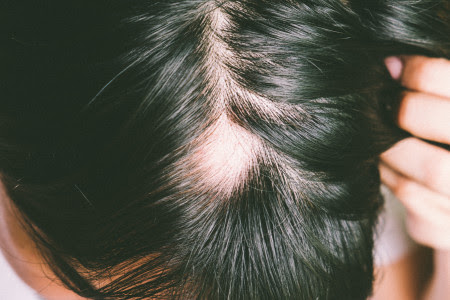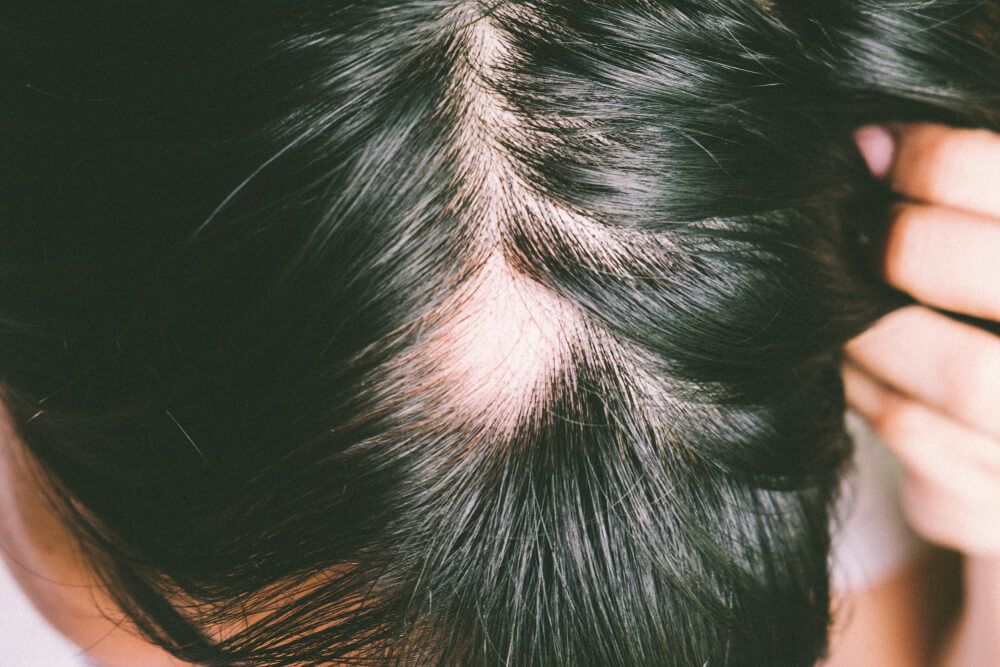What is alopecia areata?
This is a disease that develops when the body attacks its own hair follicles (where hair grows from), which can cause hair loss anywhere on the body.
Contagious: No
Pronounce: alopecia (al-low-pee-she-ah) areata (air-ē-ah-ta)
Bald patch
Many people who develop alopecia areata develop a round or oval bald patch on their scalp.

Many people who develop alopecia areata are otherwise healthy. They have hair loss and sometimes nail changes, but they remain in good health.
Hair loss tends to be unpredictable. Hair may regrow without treatment. This happens more often when someone has a few bald patches. When the hair regrows, it may fall out again—or it may not.
If alopecia areata affects the nails, you may see dents, ridges, or brittle nails. Some people develop red nails.
When does alopecia areata usually begin?
It can begin at any age; however, most people develop it during childhood or their teenage years. About half them see their hair regrow within 12 months without treatment.
When the hair regrows, it may never fall out again. It’s also possible to have unpredictable cycles of hair loss and regrowth for years.
If a parent has alopecia areata, will a child get it?
If a parent or close blood relative has (or had) alopecia areata, a child has a greater risk of developing this disease. While the risk is greater, not every child with this increased risk will get alopecia areata.
Research leading to new treatment
Because hair loss can greatly affect a person’s quality of life, researchers continue to study alopecia areata. Much of this research focuses on developing more effective treatments. This is giving new hope to patients, especially those living with widespread hair loss.
Dermatologists are conducting much of this research. If you are an adult with widespread alopecia areata, your dermatologist may talk with you about the possibility of joining one of these studies.
Types of alopecia areata
When talking about treatment, your dermatologist may mention the type of alopecia areata that you have.
The main types are:
Alopecia areata: Alopecia is the medical term for bald. Areata means patchy. This patchy baldness can develop anywhere on the body, including the scalp, beard area, eyebrows, eyelashes, armpits, inside your nose, or ears.
Alopecia totalis: The person loses all hair on the scalp, so the scalp is completely bald.
Alopecia universalis: The person loses all hair, leaving the entire body hairless. This is rare.
Our team at Warren Dermatology and Mohs Surgery, led by the highly skilled Dr. Morgan Hott, Dr. Hamrock, Victoria Dennis, FNP-C, Wendy Demetrios, FNP-C and Brianna Marin, MPAS, PA-C, specialize in treating alopecia and would love to help you! With locations in Trumbull County, Howland, Champion, and Warren, OH, we are conveniently located for you. Don’t hesitate to give us a call and schedule a consultation today!



